
Chapter 6. Chapter 6: Chromosomes and Cell Division
Review & Rehearse

Instructions
Review the visual summaries and answer the essay questions below.
Make sure to enter a brief response that completely answers each question and explains your reasoning. When you click "Submit," you will be provided instant feedback, allowing you to check if your response is correct.
(This activity contains 17 total essay questions. Each new question will be revealed once you complete the preceding question.)
1.

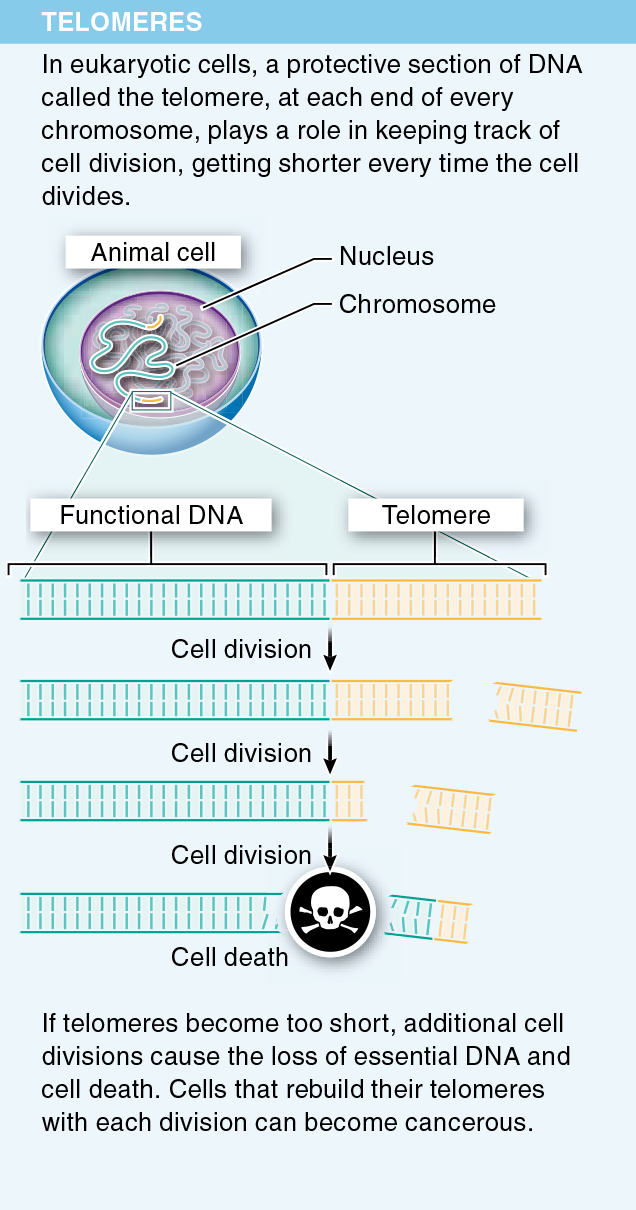
1. Each time a cell divides, the telomere gets a little shorter. If it gets too short, this can interfere with genes and lead to cell death. Why would a therapy that helped cells rebuild telomeres not be the answer to the quest for "eternal youth."
2.
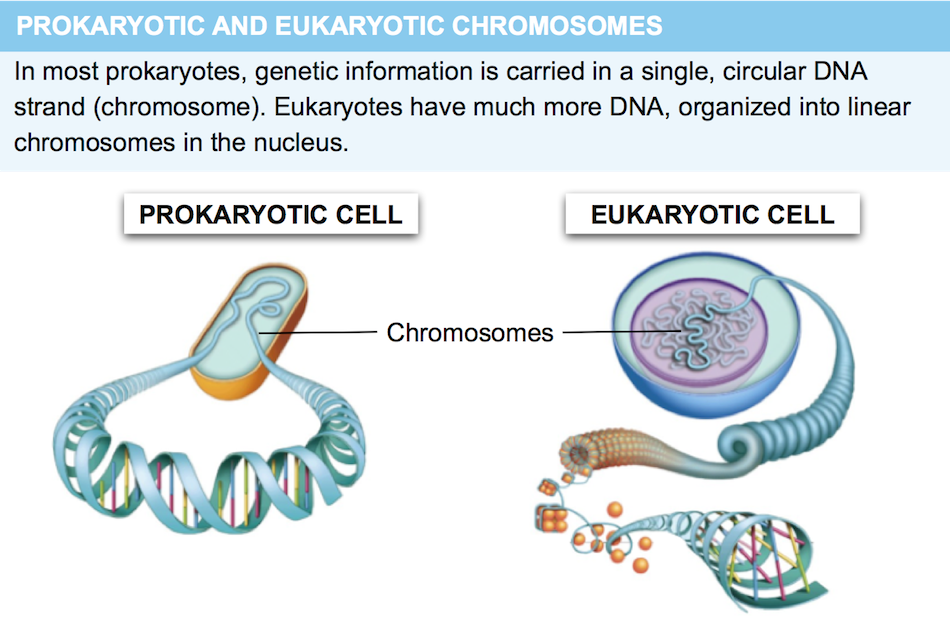
2. Compare and contrast the genetic information found in prokaryotes and eukaryotes.
3.

3. Describe the two main phases of the eukaryotic cell cycle and what occurs during each one.
4.

4. Every time a cell divides, why must the DNA in the cell make a copy of itself?
5.

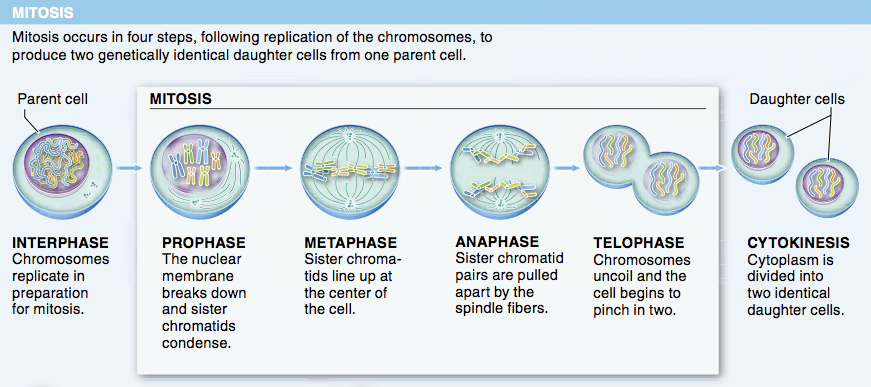
5. What is the main purpose of mitosis?
6.
6. Describe the two events that must occur before mitosis begins.
7.
7. Describe the phase of the cell cycle during which the events make it possible to end up with sufficient genetic material for two identical daughter cells.
8.

8. Describe three ways in which cancer cells differ from “typical” cells. Why is it that when someone has cancer, the properties of the cancer cells are not a direct cause of death?
9.

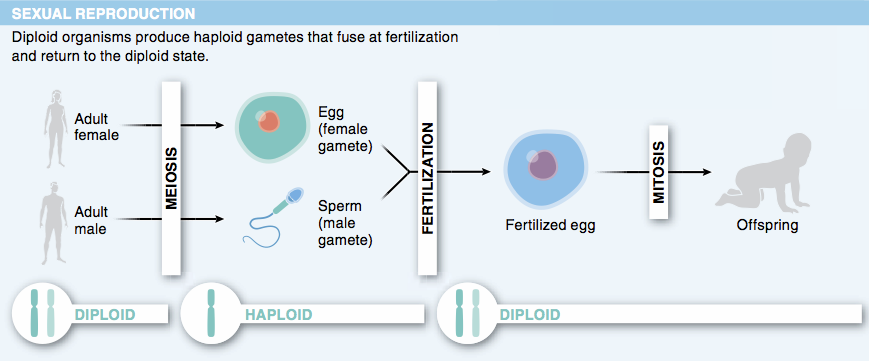
9. Why do the gametes produced by meiosis have only half the genetic material of the parent cell?
10.
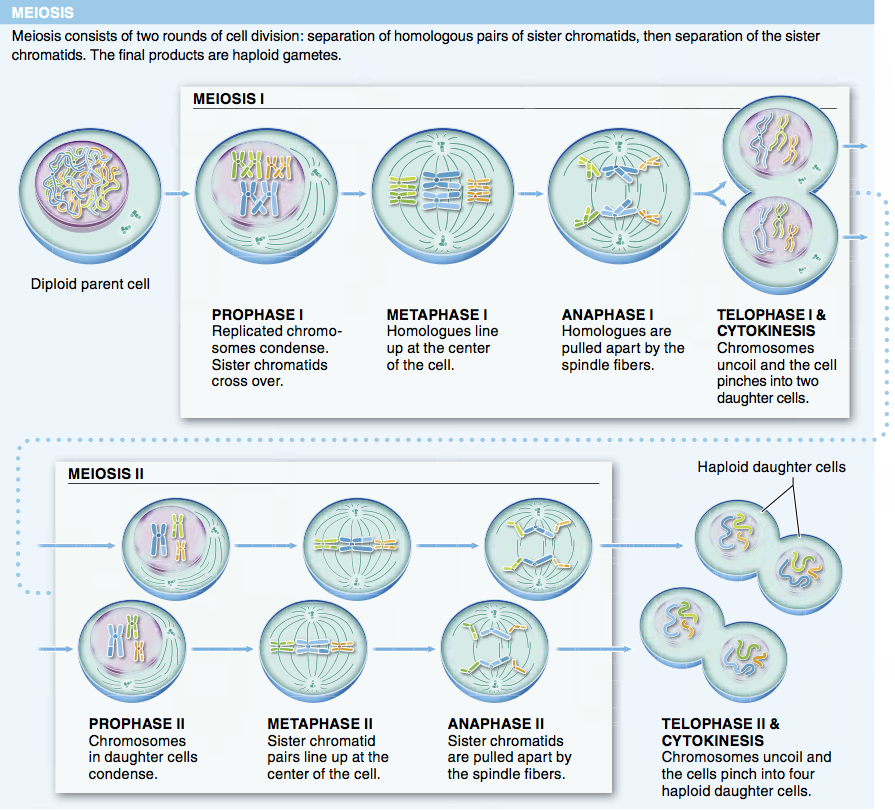
10. Meiosis consists of two rounds of cell division. Describe the outcome of each round in terms of the sister chromatids.
11.
11. In species with two sexes, the female gamete is always larger. Why is it advantageous for this to be so?
12.
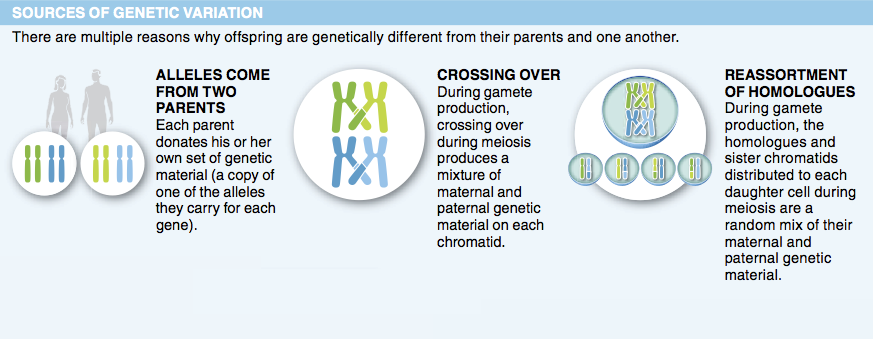
12. One important type of genetic variation does not require the creation of a new allele. How can that be?
13.
13. Why is crossing over considered such an important event with respect to evolution?
14.
14. Seventy to ninety percent of the genetic material in a sperm or egg cell made in your body could be inherited from your mother. Why isn’t there always a 50/50 split (half from your mother and half from your father)? Is the reverse situation (more genetic material from your father than from your mother) possible?
15.

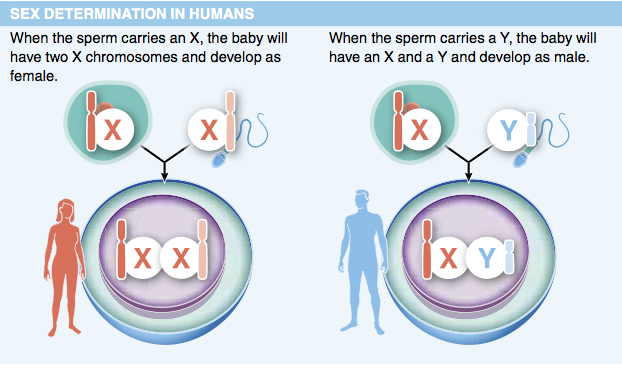
15. What are the differences between sex chromosomes and non-sex chromosomes?
16.
16. Within a species, if one sex (i.e., males or females) has two different sex chromosomes while the other has two of the same chromosomes, which of these sexes will determine the sex of any offspring they have together? Why?
17.
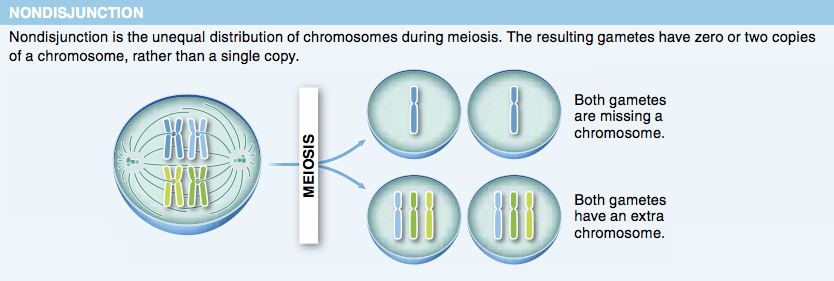
17. Healthy individuals may have just one sex chromosome, as long as it is an X chromosome. Why can’t a person survive with a Y chromosome and no X chromosome?
Activity results are being submitted...